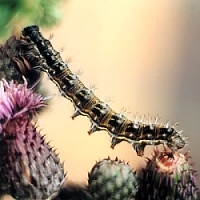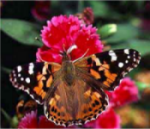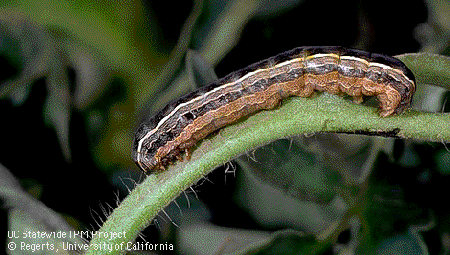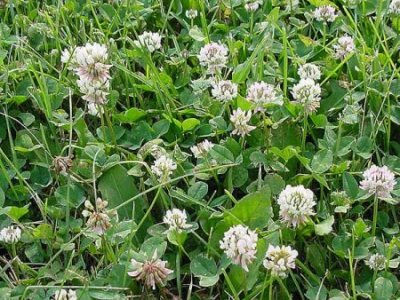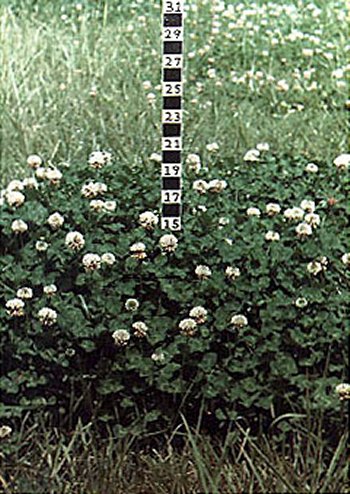
2005 Year in Review
Back to Page two: Agriculture Listing | Back to Year in Review Index
Soybean Defoliators and White Clover |
|
Source: Jim Morrison, Extension Educator, Crop Systems, Rockford Extension Center, University of Illinois, Phone 815/397-7714; FAX 815/397-8620; Email: morrison@uiuc.edu This column will focus on two unrelated topics. One concerns soybean defoliators and the other differences in the types of white clover. Thistle caterpillars (the larval or worm stage of the painted lady butterfly) and yellow striped armyworms have been observed in a few soybean fields in western and northwestern Illinois. Thistle caterpillars are about 1-¼ to 1-½ inches in length when full grown and a mature yellow striped armyworm is 1 to 1-¼ inches long. Both insects do not over winter in Illinois; rather they migrate into our area each spring from tropical locations. Low to moderate infestations of both insect pests are no cause for concern. Soybeans can tolerate significant defoliation before yield is negatively impacted. The rule of thumb for most soybean defoliators is that control is suggested when defoliation exceeds 30 percent. The threshold may need to be adjusted due to soybean plants suffering from other stresses, like lack of soil moisture, infestations of other insects, etc. White clover, a cool-season perennial legume, is many times classified in one of three morphological groups: small, intermediate, and large. Small types seldom are more than 3 inches in height and are found in closely grazed areas or lawns. They have low productivity and contribute little to grazing livestock. Large, or ladino white clovers are larger leafed, later blooming, and have more upright growth than either the small or intermediate white clover types. With optimal fertility and management, ladino white clovers are more productive than other white clover types. However, they are not dependable reseeders and have fewer stolons and leaves close to the ground. Thus, they may have lower grazing persistence. Intermediate clovers are as their names imply-intermediate. The flowering period and leaf size are between small and large types. The intermediate types typically reseed more dependably than Ladinos, possess many stolons and leaves at ground level, and produce more forage than small types. Thus, the intermediate types of white clover persist well in grazing situations. Information for this column taken from the June 17, 2005 issue of the Pest Management & Crop Development Bulletin, University of Illinois; and from White Clover Establishment and Management Guide, Bulletin 1251, University of Georgia. by Editor, theCity1.com |
|
Copyright © 2005 TheCity1.com.
All rights reserved
